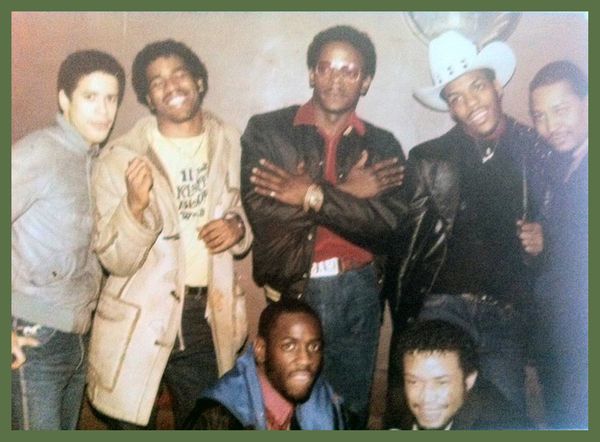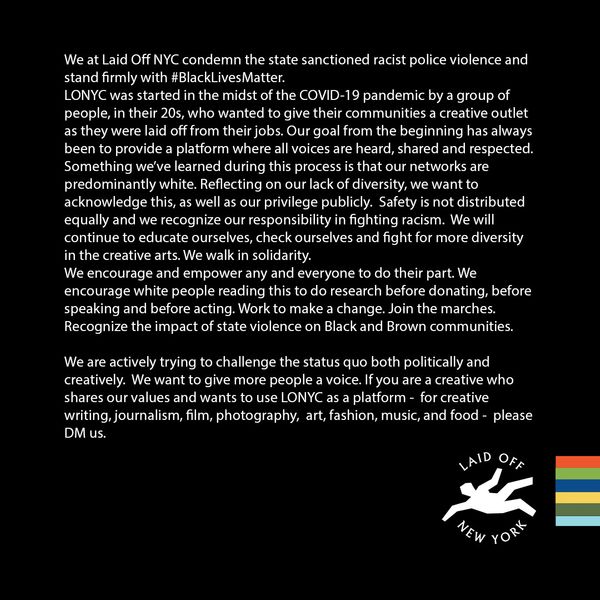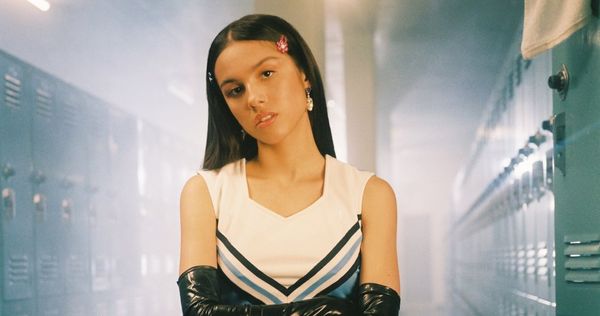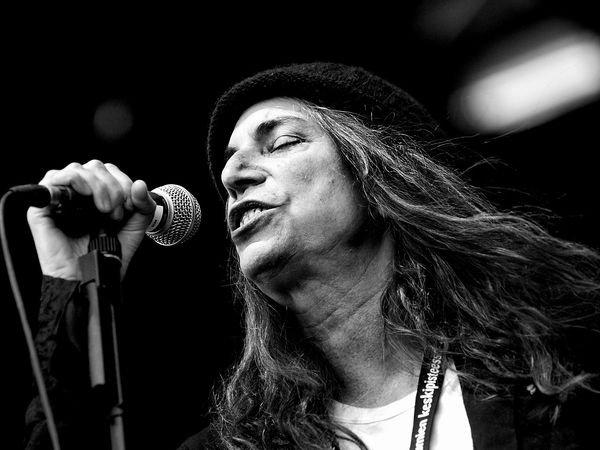Written by Daniel Girma
Kurtis Blow and Crazy Legs are, to put it bluntly, titans. They are both faces of an era when hip-hop was first breaking onto the national stage. Kurtis was the first rap artist to sign to a major label, make a gold record, and go on a world tour. Legs, a defining member of the legendary Rock Steady Crew, was on the front lines of breaking’s rise, fall, and resurgence as an internationally recognized dance form.
Kurtis is still performing, both on the stage and on the pulpit as the founder of the Hip-Hop Church. Legs continues to preside over the Rock Steady Crew and sits as a judge for Red Bull’s annual b-boy competition, BC One.
This year marks the 40th anniversary of Kurtis Blow’s pioneering single, “The Breaks.” The sequel to his wildly successful debut, “Christmas Rappin’,” “The Breaks” catapulted the 20-year-old former b-boy to the top of the rap food chain. To mark the occasion, I spoke with both Kurtis and Legs about the early days of hip-hop, its cultural impact at home and abroad, and its history as a product of and tool for social justice and racial equality.
The interviews were held separately and combined for clarity and concision. For more, watch Kurtis Blow and Crazy Legs’s one-one-one discussion on Red Bull BC One’s instagram page.
Kurtis, I was really excited to get to talk to you, not only because you’re a hip-hop pioneer. When it comes to protest and activism, I think you’re also one of the pioneers that isn’t brought up as often. So I wanted to ask you about the song “Hard Times,” off of your first album—
Kurtis Blow: Oh wow.
—Which is a commentary song that came out two full years before “The Message,” the breakout conscious hip-hop song. I was wondering if you considered social commentary a part of your hip-hop persona or if it's something that you developed into as your career progressed.
Well you see, when I got the record deal, I was in college. I was a college student majoring in communications, which was the field that I thought was most relevant to hip-hop during the time. In philosophy, I put the categories of speeches in boxes. A “demonstration” speech is one that gives out information on different subjects like basketball or Christmas. Then you have “political” speeches or “inspirational” speeches like pep rallies. “Let’s go team,” or “Let’s go out to a party,” and “Let’s have a good time tonight everybody!” Here’s one thing: an “extemporaneous” speech is one that is never written; it’s off the cuff. And that’s just like a freestyle. So I put rap in these different categories and tried to make that the basis for my first five albums, with the concept of fusing it with different forms of music. I was the first to do a rock ‘n’ roll rap. I was the first to do a country and western rap.
Yeah, “Way out West.”
So we were exploring with different forms of music. To me it was the contention that rap and hip-hop was so malleable. You could shape it in any form.
Because you were the first hip-hop artist to become as big as you became—and at that point you’re represented by a major label, you’re touring all around the world, and you’re still a conscious individual who wants to spread a certain type of message—did you ever experience pushback when you wanted to write something politically charged, like “America?”
The most fascinating thing in the world is to have the opportunity to actually make these songs and express these things that I had learned in college. We had a staff of professional musicians. I was using original music, original instruments like the ones I’ve always loved from James Brown. We had the best musicians like John Tropea and Larry Smith, Jimmy Bralower on drums. This is the guy who programmed the Linndrum! That part of my life and those first five albums were the most incredible. I learned so much.
Crazy Legs, let’s just dive right in. I was really interested in talking about breakdancing. I’ve seen you describe it as a folk dance, which I really agree with.
Crazy Legs: [Grins] I also don’t call it breakdancing.
Breaking, I’m sorry! [Laughter] Can you talk a little bit about folk dance and street dance, and why breaking is a folk dance?
Well number one, we didn’t call ourselves street dancers. People from outside the Black and Brown community decided to call it that. What gives them the right to label us street dance when ballet, which started in the courts of France, was also in the streets, but that’s not called a street dance?
I think that’s fair.
Why do we have to be relabeled so that it's easier to understand for other people as opposed to them accepting who we are, what we’re doing, and what we describe ourselves as. When we go to a Broadway show, it’s not like they’re going to make it easier for us to understand Othello. Why should we make breaking easier for them to understand?
You’ve been really vocal about trying to preserve the historical record of hip-hop culture. Even to the point where you’ve been upfront about times when you yourself have been misinformed about things. What are the difficulties of trying to maintain that record?
A lot of people need to understand that it’s OK to be a little bit wrong. We were young, we didn’t have a way to document. No one was really writing journals. A lot of the ways that promotional materials like flyers were put out don’t consist of words like “hip-hop.” They sometimes don’t consist of the year of the event.
And here’s the craziest thing! The first actual “event” was actually put together by a white man, Henry Chalfant, and the name of the event was “Graffiti Rock.” There’s video, all of that. Had we had the ability to document, or the awareness that we should be documenting, it would have been a whole different story right now.
I think when it comes down to it, the most important thing is getting the most accurate representation of what a movement was at that time.
100 years from now, no one's gonna care what the actual year that Rock Steady was formed was. They’re not gonna care about the actual year I started dancing. Ultimately, hip-hop has served as a bridge between so many global communities that it became a game changer that indirectly pushes against racism. If I'm able to build with you on who you are, what you’re about, while telling you what I’m about, next thing you know we have an appreciation. And it all started over the simple idea of, “How did you do that move? That was amazing.”
I do think, though, that one of the biggest casualties of the lack of historical understanding of how hip-hop was formed is the prevalence of the Latino community in its founding, particularly when it comes to breaking. I know that dance is such a huge part of Puerto Rican culture. I live in the Heights, a Dominican neighborhood. It’s a big part of Dominican culture too.
Oh, you’re gonna love what I tell you next, but go ahead.
When I look at breaking, I see elements of bomba, of plena. As a Puerto Rican kid in the Bronx, what was the dance culture you grew up in, and how did that travel with you into breakdancing?
[Laughter] Breaking.
I’m sorry [laughter].
Now here’s a wonderful thing. This I just found out just the other day. One of the guys who is considered one of the absolute first b-boys is actually half-Dominican. His name is Dancin’ Doug. He hung out with the dudes that were apparently around Kool Herc. And the b-boy Spy, who was Puerto Rican—he’s about 60-something now— was around in that era as well. He was your complexion—Puerto Rican, but anyone would have thought he was Black. Did he have Black in him? Yes.
What I grew up around was a lot of disco, a lot of funk and soul, and salsa. All of that was around me ‘cause we’re talking New York. I grew up around El Gran Combo, James Brown, Joe Cuba, Michael Jackson. Soul train. Watching Sábado Gigante at my friend’s home, where their parents were watching Telemundo or Univision. But I didn’t speak Spanish, so I gravitated more towards funk and soul.
You’re pretty outspoken on the importance of Black and Latino communities being more unified. It’s a message that I’ve also seen in the protests recently that’s been reassuring and relieving for me. What are some of the main barriers that are causing this Black and Latino divide when it comes to civil rights?
I think a lot of people have a hard time with... I think they feel like they have to give up their cultural identity to be supportive of someone who’s going through the same situation. For me, I know that within my family history, there are Black people. But that doesn’t make me put aside my cultural history as a Puerto Rican. I think when people are scared of losing their cultural identity because they have to admit that they have Black in them, they find that to be a problem.
People are growing up in communities where it's Mexican here, Black here, Asian there. It's crazy because we are separated, but the white communities are a blend of all kinds of white, for the most part. And that is a problem. Why are we separated when the white communities are integrated? You do have your pockets of this and that, but it's very easy for a caucasian person to move into an Italian neighborhood and not be treated any differently. But if a Mexican person moved into a Black neighborhood outside of New York, they might be treated differently, when we have more in common in terms of oppression, segregation. I think we need to figure out who our allies are—Black, White, Latino, Asian, all of that—who want to rock together and rise up against anything that is keeping us apart.
Kurtis, I’d like to talk about what it was like breaking into global acclaim following “The Breaks.” You’re 20 years old, playing at Madison Square Garden with the Commodores and Bob Marley. Before that, maybe the biggest concert you had was playing in Philly with the Clark Sisters. What lessons did you learn on that tour?
KB: There are several things about that tour that I kept with me for the rest of my life. Reverend Run was my DJ at the time. When I got the tour I was so happy and told him, “Run, we’re going on tour!”
Run broke his arm. He was playing basketball down in Hollis, Queens at this park with his friend down the block, named Jason Mizell. [Mizell] broke [Run’s] arm. Run’s talking to his father: “Dad! I’m gonna go on tour!” But his dad is like, “You can’t go on tour, look at you!”
“Oh please, let me go on tour!”
“No, you can’t go on tour, you gotta stay in school! You broke your arm, you can’t go on tour!”
“I’ll play DJ with one arm!”
So he stayed home, and I went out on tour with another legend, Davy DMX. But when we came back off the tour, Rev had formed a rap group with his friends that he played ball with down the block called Run-DMC! It was Rev, Darren McDaniels, who had big big bifocal glasses, and the kid who broke his arm, Jason Mizell, all his crew that would hang out in the attic when we used to rehearse. The story is, there would never be a Run-DMC if Jay didn’t break [Rev’s] arm. Because he still would be my DJ, still today.
On your first tour, what was the location you performed at where you were the most pleasantly surprised by how the crowd reacted to your music?
That’s a really difficult question because there were so many places! It was like a miracle dream world I was living in on those first tours. The crowd response….
I learned from the master. I saw, with my own eyes, DJ Hollywood at Club 371 up in the Bronx in 1976-77. He had the crowd eating out of the palm of his hand. They would say anything. I studied Cab Calloway and what he did at the Cotton Club. This part of hip-hop is sort of like the gospel and the preacher: “Say ‘Amen!’” “Amen!” That participation makes the people feel like they are part of the concert and the night. And when we unite it is so powerful that we are together in numbers. You can hear it from miles away.
It makes you feel good inside when you do this. I remember the feeling I had when I saw Hollywood do it. I was in the crowd participating. I went back every week! I went back the next week, the week after that, to get this feeling. To be a part of this new situation. A thousand people in unity controlling the mic.
That policy of crowd response was the biggest thing of hip-hop that got it spread around the country, and I was a big part of that. I think that was my contribution, and I want to send a message out to all the young kids of the day that you have to reinvent that crowd participation. As an entertainer, your job is to make people feel good inside when they leave your concert. If they feel good when they leave your concert, they’ll buy your record the next day.
Legs, when I look at early breaking videos, the thing that always strikes me first when it comes to its energy is the intimacy of the crowds and how close people can get to the breakers themselves. You’re at risk of a limb hitting you in the face.
CL: In the ‘70s, you wanted to keep your kicks clean because you were poor. You didn’t know when you were going to get a new pair of sneakers. So we carefully practiced our moves to protect our sneakers. Also, the way we practiced in small hallways resulted in us making our footwork very compact and intentionally making it bigger when we knew we had space. So a lot of that was by design, even what we wore. If we knew that we were gonna be in a place that had a dark floor, we would wear pants that had a white stripe so that it would accentuate our footwork.
Since then, you’ve performed at some of the great theaters in the world. How do you bring the energy of a small enclosed space to a place like the Hammerstein Ballroom?
I think you pick those things up from people who have a knack for that environment. I learned a lot from [Rock Steady member] Mr. Wiggles, and also by trial and error. When you know people respond to certain moves well, then while you’re onstage, you stick to those moves. Also, when you’re creating a project and go to the back of a theater, you realize what looks dope in a small circle has to be a little bit more exaggerated onstage because, at a distance, that move looks even smaller. We adjusted as we went along. It’s not like we were trained for that environment.
What aspect of breaking do you think is the most responsible for its popularity throughout the world? Many different cultures seem to appreciate breaking, and you find subcultures in every continent.
You gotta remember we went through a couple phases of it supposedly dying out. In the ‘90s, although breaking was still happening in places like Japan, Germany, France and Italy, Mr. Wiggles and I realized that those people didn’t have access to the new medium—The Source, Right on!, Word Up! We could reach out to all those magazines directly because we knew that the Rock Steady name had weight.
Wiggles pointed out that we need to call breakdancing its original name, because that is going to cause controversy. So we purposely said, “We’ll go to these hip-hop seminars, with people who are trying to talk hip-hop history just because they have a hit record out, as panelist assassins. We’re going to rip them a new ass. And they’re going to know that b-boys did it.” We knew that type of dialog would draw attention to our scene.
Kurtis, what kind of hip-hop do you listen to today?
KB: I’ll be honest, I love some Drake, I can listen to some Jay-Z, Nas, Future, any one of those cats that are doing their thing who are hot on the radio right now. I really love my old school ‘70s funk, or even ‘60s funk like Sly and the Family Stone, early Earth, Wind & Fire, early Kool & the Gang.
Jimmy Castor?
His whole catalog! Jimmy Castor was rapping back in 1976 too! From 1968 to 1976? I can listen to that all day.
I’ve been covering the recent protests over George Floyd, and something that struck me is the role that music and dancing is playing inside of them. But it’s also interesting that it’s mostly music that harkens to this era.
I’m a big fan of history, and when I was in college I studied the history of music. I’m a lover of old music. R&B music and soul music was born out of oppression, and the self-expression of dealing with the reality of oppression. Slave music, gospel music, was created as a protest to slvaery. Then you have the 1920s and the Harlem Renaissance. All that music up in Harlem was representative of the oppression and the separation that was happening during the time. Then we have the Civil Rights movement and the soul music that came out: James Brown, Sly and the Family Stone, Bob Dylan. “Say it Loud—I’m Black and I’m Proud” came out. That music was a cry against the injustices that were happening in the '60s and '70s.
And then here comes hip-hop. Of course you have our social songs that were dealing with racism and oppression. You had “The Message,” maybe the greatest song in hip-hop history. “Don’t push me cause I'm close to the edge / I’m tryin’ not to lose my head.”
All this oppression, all this inferiority complex that I have said we are born with, we are dealing with it through our music and it makes us feel better, and we’re protesting, saying “This is wrong,” and it’s always gonna be like that.
Do you think there should be more involvement with current artists today to make a statement with their music, or with their words outside of music, to aid this movement?
I think it is imperative that the artists of today stand up and join the fight. Let’s be a part of this revolution, this incredible, incredible change that we are fortunate and inspired to make. We have a lot of work to do, and we need your music to express it. So let’s unite, come together and show the love for humanity.
Check LONYC weekly our take on:music, film, food, fashion, politics, photography and creative writing. Follow us, feel the vibe @laidoffny.
Get to know Daniel better, @Girmaniumalloy for all his latest stories.



